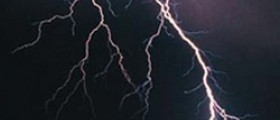
Juvenile myoclonic epilepsy is actually the most frequently reported type of generalized seizures. It can be in a form of absence seizures, myoclonic seizures and generalized tonic-clonic seizures. Initially there are absent seizures. They occur between the age of 5 to 16. After 1 to 9 years a patient develops myoclonic jerks and finally, he/she ends up with generalized clonic-tonic seizures. The condition is equally distributed between genders.
Apart from typical presentation, there are several more factors that contribute to establishing diagnosis of juvenile myoclonic epilepsy. These include normal intelligence, the onset around adolescence and a family history of juvenile myoclonic epilepsy. Seizures in these patients are triggered by lack of sleep, psychological stress, alcohol abuse etc. Treatment is administered through the entire life but the prognosis is fairly good.
Juvenile Myoclonic Epilepsy Pathophysiology
This type of epilepsy is considered an idiopathic generalized epileptic syndrome. It never develops as a consequence of brain tumor, head trauma or injuries as well as encephalitis.
Routine analyses of brain specimen of such patients have not revealed any abnormalities. The only histological finding is the presence of partially dystrophic neurons in the stratum molecular, white matter and several more parts of the brain.
It is also confirmed that certain families have specific mutation in their genetic material which is associated with the condition.
Causes of Juvenile Myoclonic Epilepsy
Unfortunately, in spite of many studies experts have not managed to identify the exact cause of juvenile myoclonic epilepsy. Specific genes, however, have been confirmed to be connected with the condition. The mode of inheritance is still mysterious and not clear.Juvenile Myoclonic Epilepsy Clinical Characteristics
These patients typically experience myoclonic jerks on awakening from the sleep. Seizures occur in the morning and may even develop once the person wakes up from a nap. The attack resembles a shock and movements are irregular and arrhythmic. They affect the arms while sometimes only fingers may be affected. This is the reason why patients look clumsy and drop things. Myoclonic jerks affect one or both sides of the body. Myoclonic jerks usually occur in clusters and may be only an introduction to generalized tonic-clonic seizures.
As far as generalized clonic-tonic are concerned, they affect almost each and every patient. Absence seizures, on the other hand, are reported only in one-third of the affected individuals.
The most severe thing associated with juvenile myoclonic epilepsy is myoclonic status epilepticus. It is characterized by multiple myoclonic seizures that last for a while and require prompt treatment and adequate care.

















Your thoughts on this
Loading...